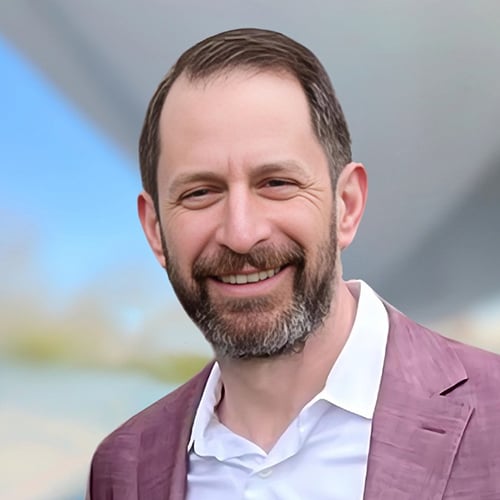Keith was the life of the party. I mean, all the time. He was athletic and handsome, and when I was preparing to marry his sister, Denise, there was no doubt that I would ask him to be my best man. He really was like a brother to me.
During the summer, he would show up to the Boardy Barn, a summer-only destination bar on Long Island, dressed as Superman. And it wasn’t just a costume as far as I was concerned; he really seemed like Superman.
But deep inside, he struggled. He fought demons that only he saw. From the outside, it was hard to imagine. He worked out. He was social. If you didn’t know, you’d think he had it all.
He described his symptoms in physical terms to me. “It feels like I have a 105-degree fever with body aches,” he told me.
Eventually, in the early 2000s, he was given a diagnosis to match his symptoms. He suffered from bipolar disorder.
In those days, mental illness wasn’t talked about like it is now. Fortunately, he had his family’s support. His company provided the time and space that he needed to confront his illness. Keith made it to doctor appointments and visited specialists who tried to help, treat, and heal.
He had highs and lows, but it always seemed like the walls kept closing in on him with every new incident or setback. At one point, over the Easter holiday in 2004, he threatened to hurt himself. He was hospitalized, but because the hospital was short staffed, he was placed on a floor with mental health patients who were suffering far more than he was.

When we visited him, he seemed different. He was shocked by the people around him. “Listen,” he told us, pointing to the others on his floor. “I’m not going to end up like that.”
“It’s not going to happen,” he promised. “I’m not going to be in an institution the rest of my life.”
The hospital visit could have been helpful. He was soon discharged and seemed to bounce back. But for Keith, the experience left a bad taste in his mouth.
Six months later, I got a call.
It was my father-in-law, asking to speak with me. He didn’t have the heart to tell his daughter, my wife, the devastating news.
Keith had taken his own life. He was 27 years old.
I told Denise, who ran to the front yard, sobbing. We kneeled on the grass, devastated. Before Keith, I hadn’t known anyone with depression or bipolar disorder. I remember telling Denise, “I didn’t know that Keith was going to die from this disease. I didn’t realize that that was even a possibility.” It’s a memory that’s etched into my heart.
Something strange happened after that. At the funeral, people who shared stories about the beautiful life Keith lived would come up to me or Denise and, with a knowing wink or nod, say something like, “I know exactly what you’re going through. I had an uncle who died in a car accident.” Or, “I had a close friend who had a heart attack.”
I realized they were telling us their family secrets. They, too, had been touched by the tragedy of suicide, but they weren’t ready to be transparent about what had actually happened.
It was a position I couldn’t possibly fathom. Why weren’t more people telling the truth? Why was there such a reluctance to be honest about the consequences of mental illnesses?
A quiet word about a car accident or a heart attack is a narrative that’s easier to understand, maybe, but it only promulgates the stigma for future generations. It’s hard to answer the question of “why” if no one is even willing to be honest about “what.”
As I got more involved in the mental health space, I realized how prevalent this attitude was.
Early on, Denise and I promised each other that Keith’s story would be different. We wouldn’t let him go quietly. We wouldn’t make up stories about how he passed.
We also decided to help how we could. Not long after Keith’s funeral, we went to a walk on Long Island organized by the American Foundation for Suicide Prevention (AFSP). My wife and her mother were looking for resources when we came across the event. There were probably 800 people in attendance, each affected by suicide in one way or another.

I had never known anyone who had died by suicide, and it was a gateway into what this experience looked like. It was difficult, but in a way, refreshing, especially after what we had experienced at the funeral.
In the 21 years since Keith passed, I’ve stayed involved in the AFSP and have raised $2 million to support suicide prevention and awareness.
I would swap every last cent to have Keith back with us. But that’s not possible.
Instead, I focus on the community. We can make a difference, as a society, and help people navigate their own struggles. I want to help other families avoid an experience like ours.
Even as we were coping with our loss of Keith, I was undergoing my own professional transformation. I had been working at a large bank, but put the wheels in motion to launch my own wealth management firm. After Keith passed, my initial reaction was to stop everything. There were much more important things going on and it didn’t seem like the right time to open a business.
But Denise was adamant about moving forward. “Keith wouldn’t have wanted you to change your plans,” she told me, as I was mulling the decision. My in-laws felt the same.
Sometimes you have to compartmentalize stuff. I had to in those first few weeks of preparing to open my business. But in the long run, running my own business has given me the chance to be more empathetic within my practice. My experiences have been helpful to the families we serve. After all, money and finances are meaningless if you can’t enjoy the fruits of the labor.

My transparency has also helped me provide better financial advice to my clients. They and their family members have shared things they probably wouldn’t tell other advisors. I’m seen as “one of us” to some. The most important conversations I’ve had are not money related. When people are struggling, sometimes they just want to talk. They feel comfortable having a conversation with me.
We all experience highs and lows. The differences come down to how our brains process these things. Because I’ve been so open and honest about my life, I’ve had advisors reach out to me because they or their family members are struggling. It’s refreshing to have a conversation— and that’s especially true for advisors running their own practice. It can be a lonely profession.
I don’t have all the answers, but I do know how to navigate some of the things I’ve encountered. If I can help other advisors and uplift the profession, it makes it better for all of us. If I can help other advisors improve their mental health, it helps everyone they come into contact with.
It’s a ripple effect. But it’s not me or my experiences that are making the biggest impact. At the center of it all is my Keith, my brother-in-law and my Superman.

If you or someone you know is in crisis, call 988 to reach the Suicide & Crisis Lifeline. You can also call the network, previously known as the National Suicide Prevention Lifeline, at 800-273-8255 or text HOME to 741741. These services are free and confidential. Visit SpeakingOfSuicide.com/resources for additional resources.
Mitlin Financial and TradePMR are unaffiliated companies.

